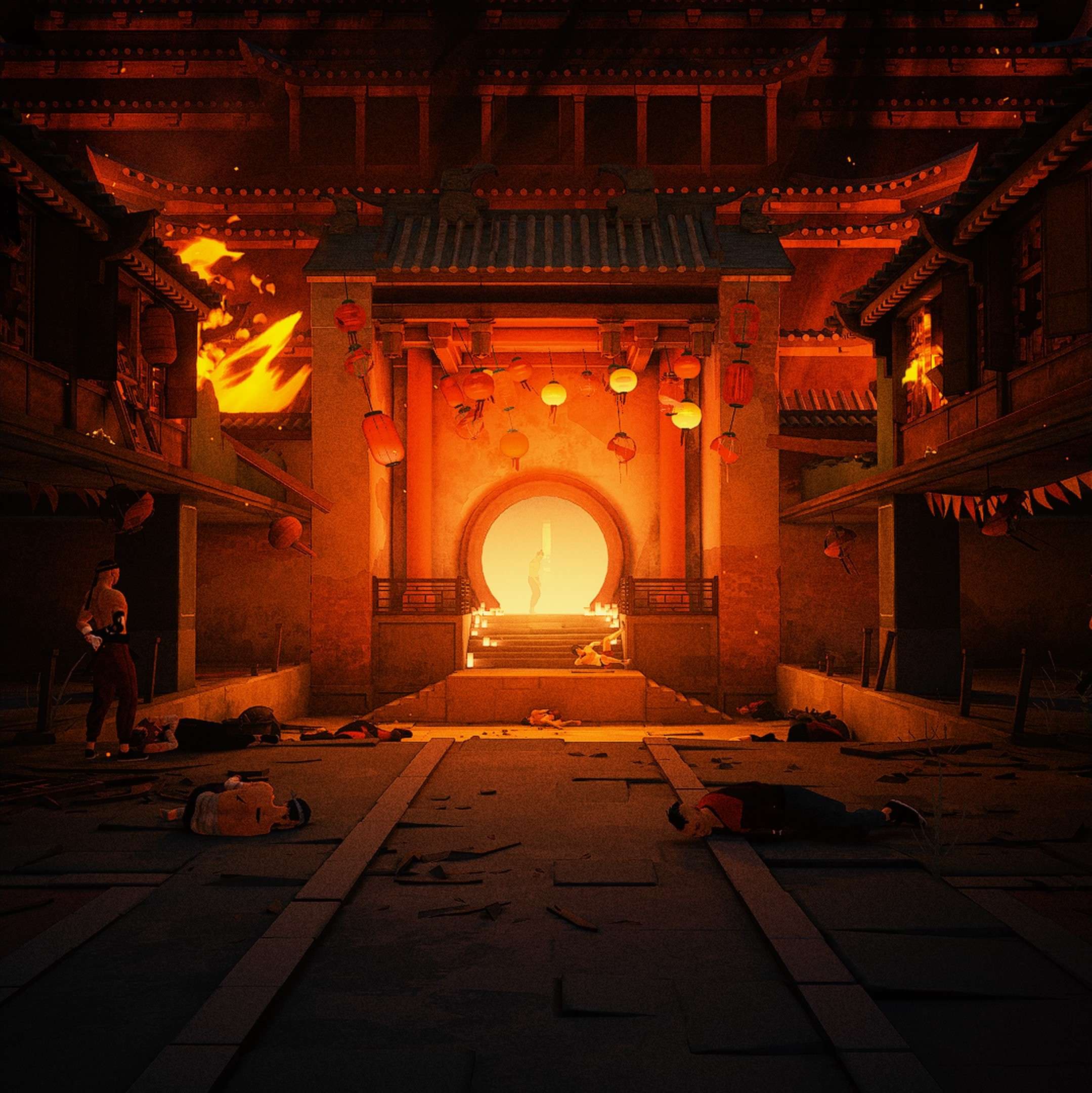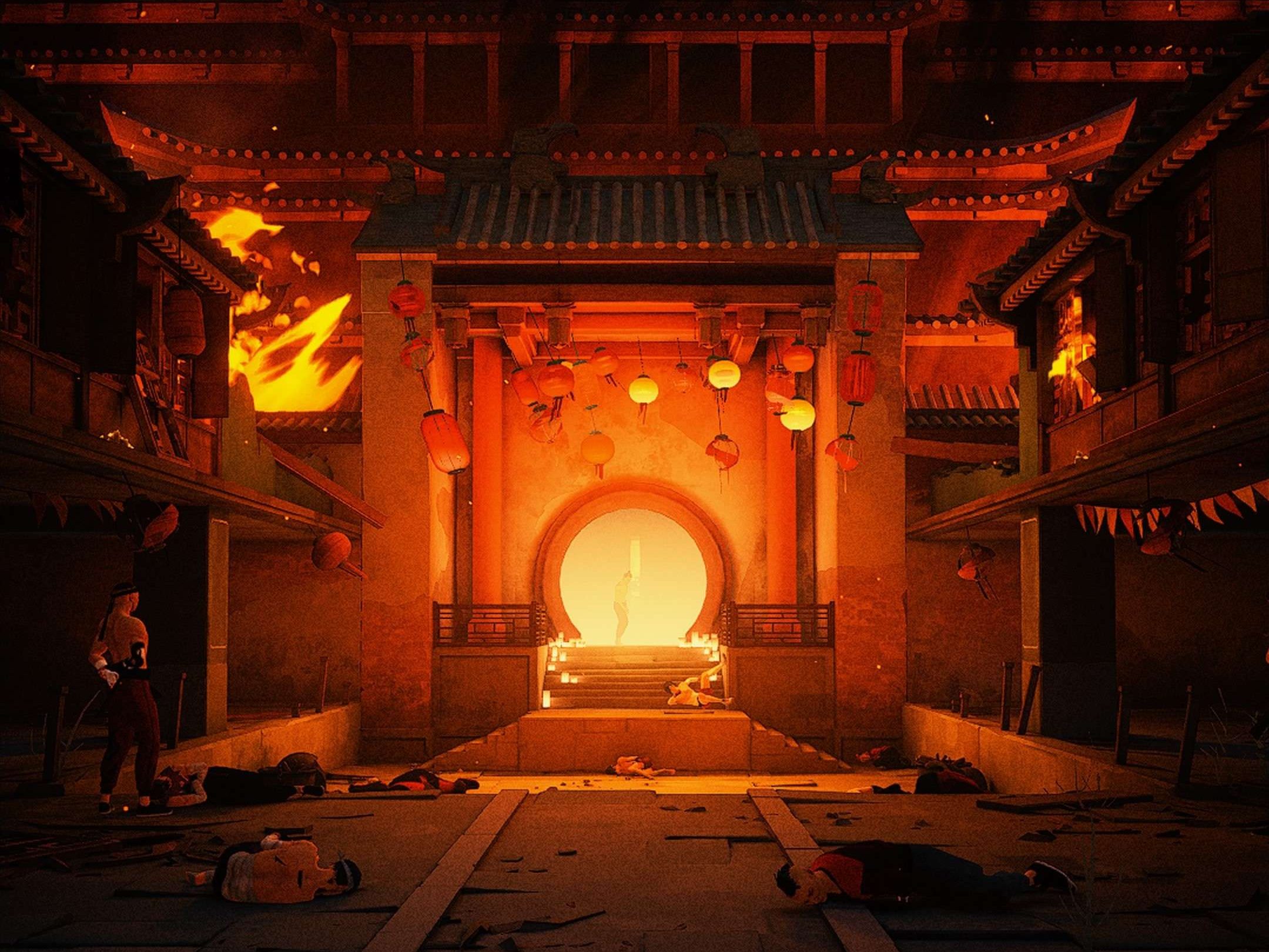// Foreword
[This review is sponsored by NotAnAccountant. No images are shown from the final two levels of the game.]
2023 was a lot of different things for a lot of different people. It was undoubtedly the first year that felt “normal” after the two previous were spent hiding inside from an infectious virus that sought to sunder our lungs and good health.
So what did people do with this newly regained normalcy? Some people started new jobs, finally got married, moved homes, heck, some people even started a family!
While these things are all great, I think we can all agree that what I did with my 2023 was much more impactful: I unsubscribed from a bunch of subscription services.
Yep, 2023 was the year I kicked these things to the curb. No more recurring payments for things I rarely use. Big Streaming will no longer keep its grubby hand in my pocket, pilfering increasing amounts of fundage for services they increasingly make worse.
The most recent of which was my PS Plus subscription.
I purchased one year of PS Plus approximately one year ago. Of course, this would time out just so that I would NOT be able to download my “free” copy of Sifu, a game that had been squarely in my “I’ll play that one day because it looks cool” category of games.
Jim Sony had no doubt done this just to spite me. I lamented publicly that life just was not fair.
I learned of this news on February 27th at 9:42 AM.
“Fuckers,” I said.
“They can’t keep getting away with this.”

[artistic representation of me looking at Sifu on PS Plus]
But if the winds of change are real, then there was a tornado heading for my house. It was the afternoon of February 28th – Yes, just one day later – that I would arrive home to find a package waiting for me at my door.
No, not just a package. A gift. From NotAnAccountant.
I fiendishly tore into the package, hoping most of all it would be one million dollars in cash, but second most of all a copy of Sifu.
There it was.
Sifu.
// Kung-Review
Sifu is the perfect-sized game for my taste. Five levels that are immaculately crafted and a total experience that will rack up somewhere in the ballpark of 15-20 hours.
What’s really amazing about it – what the crux of this review will be – is how the game makes you feel like you’re truly mastering a skill in that time.
The game also offers you a plethora of post-game and bonus stuff that will allow you to keep playing with fresh content for pretty much as long as you want.
But for the purposes of exploring what this game “is about” I will stick to the main story.

Sifu trains you through repetition. I can still remember going through the first level the very first time. I was afraid of everyone. In each encounter, I would nervously mash the attack buttons and spam the block anytime someone came near me.
I would buy new skills, but simply trying not to die by executing the basic commands was taking up all my attention. I certainly didn’t dare try a fancy new move or a combo.
I button mashed my way through level one. I managed to beat the boss and come out the other side as a senior citizen. I scraped my way far enough into the second level to get totally trounced by the first miniboss.

At this point, I sat back and let out a sigh of holycrapitude. The thought of beating five increasingly difficult levels seems impossible at all, let alone with a limited lifespan. But you try again, and again, and again, and before you know it, level 1 is a cakewalk.
Dying here at all is now the exception, not the rule.
You put in the work and you get better. However, the work doesn’t feel like work.
// Fun-Fu
The grind never feels like a chore in Sifu. There are many factors to this: The level design, the art direction, and the ever-growing set of new abilities.
That, and at the core of it, the combat just feels so damn good.
You’ll burst into a room and weave together attacks, parries, throws, trips, and chucking a bottle at a guy’s head with a satisfying crash, all in one smooth flow. Even when broken down into it’s most basic elements, the game feels good in your hands. Just switching between a parry and a light attack until you can use your finish move on your opponent has a satisfying back and forth that I never grew tired of. When you weave everything available to you into one fight, it feels masterful.
Don’t take that to mean the game is complicated, however. I had previously been nervous that I would ever really “get” this game because I’ve never been any good at fighting games. I can safely say that Sifu is nothing like those.
The brilliance of Sifu is that it teaches you to be able to read the situation and pull out the best tool from your toolkit at that time. It relies on built up knowledge of your skill set and learning attack patterns much more than it does on executing complicated technical combos. I still fuck up quarter-circle-forwards half the time and I had no issues here.
Even among the basic techniques, you have choice. Let’s use blocking as an example.
You can simply hold the block button. This will reduce the damage you take or sometimes even nullify it, but eventually you’ll have your structure broken. This leaves you open for attacks. You can use the dodge move, which will allow your structure damage to go down, and you’ll avoid damage, but you’ll need to be able to time it. Or, you could try to parry. This will require you to tap the block button right when the attack hits you. This is the hardest to pull off but increases the attacker’s structure damage. More risk, more reward. To master combat, you’ll need to get used to all of these, and recognize when to use each of them.
You gain experience along the way which you can spend on new abilities. These can be new moves, permanent passive upgrade, or new focus techniques. For the most part, these don’t make the game easier, they simply offer you new tools.
If you invest in a skill five times, you permanently unlock it. This means that getting a new skill takes a bit of time. While you unlock one, you’re mastering the others, learning enemy patterns, and unlocking new paths. You’re getting a little further each time. It never once felt like I was just spinning my wheels, there was always progress being made.
Sifu constantly pushes your boundaries with new and tougher enemies. By never allowing you to feel totally comfortable, you’re never allowed to stop growing.
I don’t want to give away too much of what you’ll be up against because I think that’s best experienced for yourself, but the challenges you’ll be up against are as varied as the tools you have at your disposal.

What was once a miniboss is now just a guy, and he’s there with his friends. Before you know it, you’re in an area full of minibosses who all come at you at the same time.
Although there is a twinge of frustration when you die so close to beating a level, I was always excited to start another run. Each attempt meant I could try out new things while getting better at what I already knew.
One run you might try and be more aggressive. The next, you really focus on getting the timing down on your throws. By keeping your best run attached to each level you don’t need to worry about accidentally hurting your progress by trying something new. You can only move forward. This also encourages you to go back and master previous levels, since you will be giving yourself more lives to work with later on.

The boss of each level takes the core idea of repetition and mastery and applies it to One Dude who will probably kick your ass. The first attempt usually resulted in me scrambling to stay alive and ultimately failing in that goal.
Succeeding each death on the first attempt at a new boss I uttered the phrase, “Well that’s impossible, how is anyone supposed to beat this guy?”
But, you’ll learn. That’s the beauty of it.
// Kung-Hue
While the stand-out feature is obviously the combat mechanics, I was also very struck by the art direction. The game’s approach to bold colour work and a simplified graphic style make for very impactful visuals.
Each level feels like its own world. Not just because of the colours, but the lighting and environments are all carefully crafted to be unique.
Sifu’s art director Paul-Emile Boucher noted that the game was designed around two cycles:
The world of Sifu is built upon two conceptual schemes.
The first one is Wuxing, the traditional five-elements cycle.
The second one is the Confucian ethical code, and its Five Constant Virtues.
Those elements are: wood, fire, water, metal, earth.
The Five Constant Virtues are: benevolence, propriety, wisdom, righteousness, and trustworthiness.
The elements were quite clearly used to inspire both the bosses and their level designs. Everything from the visual appearance of the bosses, to the colour grading of that level, to the environments themselves.
The Five Virtues are what you impart on each boss when you spare them instead of killing them. Each of those lists are ordered in the same order as the levels in the game.
Please check out the links in the sources section at the end for more on these topics.



All this comes together to create a world where you’ll want to spend as much time in the photo mode as you will fighting. I said on more than one occasion that the museum level is more interesting than some actual museums I’ve been to.
The levels don’t just look good, though. They are masterfully crafted from a level design perspective as well. They constantly incorporate themed elements into the gameplay. The elements of the displays in the museum that you can throw, the reduced arena sizes on top of the elevators in the tower, the stairway that leads you up both literally and metaphorically to the peak of your journey – I could go on and on.
Everything is intentional.
One additional aspect I want to applaud Sifu for is its use of verticality in its level design. All the levels have you moving up and down between floors of a building, jumping down into a fighting pit, or (much to my delight) chucking dudes off the fourth floor of an open concept building down into a fountain on the ground floor.
// Kung-Clusion
I think Sifu is a game that everyone should try at least once. I believe anyone can learn to master it, and with the newly included Student difficulty, it’s all the more accessible.
It doesn’t just teach you how to be good at Sifu, but it teaches you how to master a skill. It shows you that it IS possible to do that thing you think is impossible.
For my money (or, my friend’s money) you’ll be hard-pressed to find a more satisfying feeling game to play.
So get out there and get good.
// Sources
https://www.artstation.com/artwork/OmE5n6
https://en.wikipedia.org/wiki/Three_Fundamental_Bonds_and_Five_Constant_Virtues



